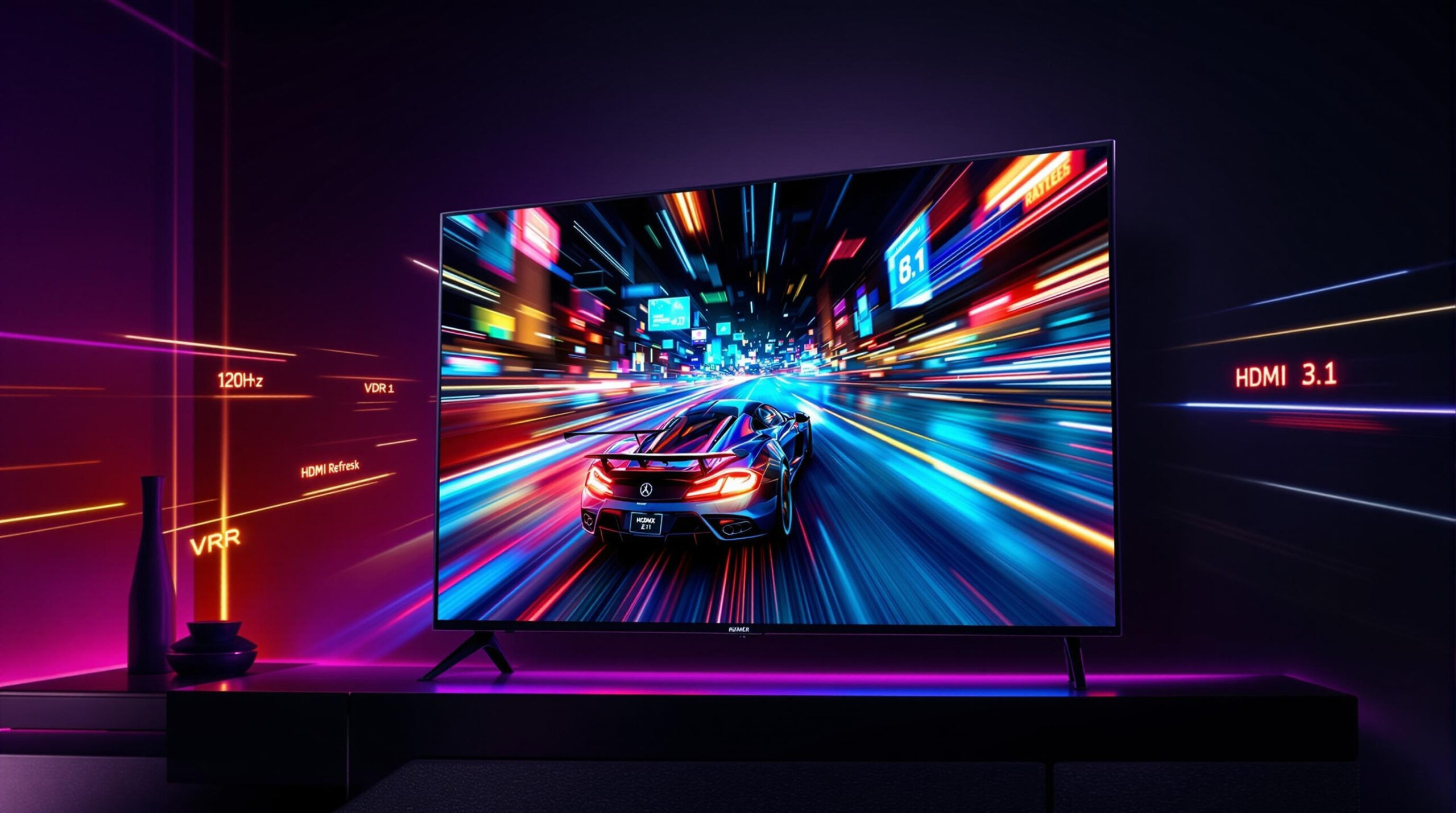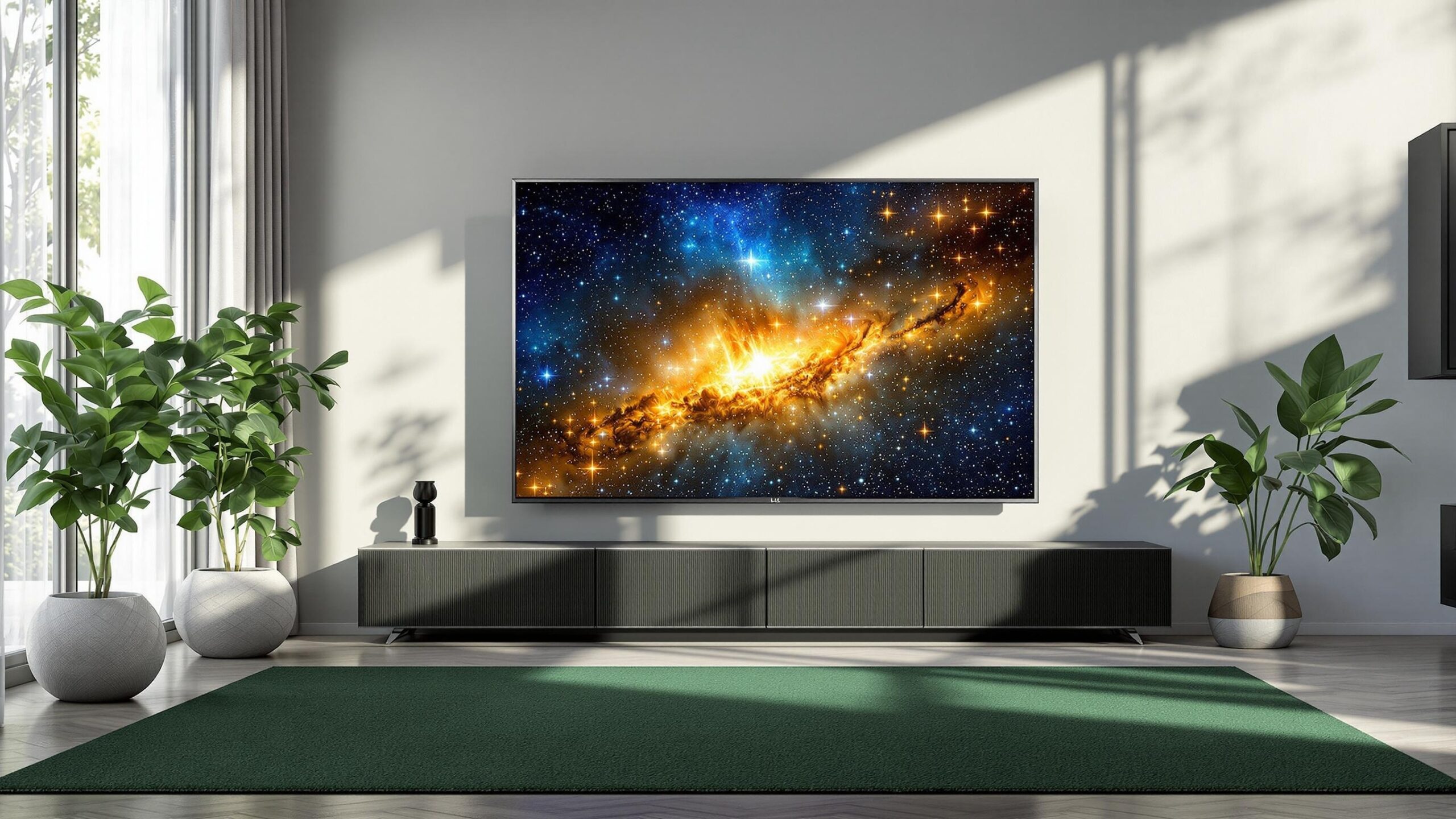Gamers are a demanding audience. They crave razor-sharp motion, color that explodes off the screen, and input responsiveness so immediate it feels hard-wired to their reflexes. In the crowded world of premium displays, QLED televisions stand out by combining quantum-dot color science with blistering brightness and ever-shrinking input lag. Yet not every QLED is created equal, and the spec sheets can read like alphabet soup—VRR, ALLM, FALD, mini-LED, and more. This deep dive unpacks the physics, chemistry, and electronic engineering inside a gaming-centric QLED, translating lab jargon into plain English so you know exactly what matters before you pull the trigger on that next-gen screen.
Pixel Response and Motion Clarity: Taming Ghosts and Blur
Fast-paced shooters and racing sims expose the Achilles’ heel of many LCD panels: liquid crystals twist only so fast, leaving faint “ghost” images trailing behind moving objects. QLED sets combat this with vertical-alignment (VA) liquid-crystal modes, which require a smaller angular rotation to modulate light than older twisted-nematic designs. Overdrive circuits push voltage briefly above target, flipping molecules faster while a secondary clamp prevents overshoot from brightening the pixel too far. The result is sub-5-millisecond gray-to-gray response—quick enough to avoid blur at 120 frames per second. When combined with black-frame insertion or backlight scanning, motion clarity approaches that of high-refresh gaming monitors without sacrificing the wide color gamut gamers expect from HDR titles.
Quantum Dots and Color Volume: Painting Worlds in HDR
Every QLED television begins with a sea of royal-blue photons produced by gallium-nitride LEDs. Suspended above is a thin film speckled with nanocrystals, each just a few billionths of a meter wide. Quantum mechanics dictates that smaller dots emit green light and larger dots emit red, but all do so in razor-narrow spectral bands barely 25 nanometers wide. Such purity means that even when HDR highlights push brightness past 1 500 nits, green foliage stays emerald and crimson health bars stay blood-red instead of washing out. For open-world games where sunset gradients flood the screen, that color-volume headroom translates to more convincing skies and deeper immersion.
Refresh Rate and VRR: Syncing Frames to Avoid Tear-Downs
Modern consoles and graphics cards output variable frame rates as workloads rise and fall. Without synchronization, the television may display half-completed frames, creating horizontal tears. QLED gaming sets implement variable refresh rate—most commonly HDMI Forum VRR, FreeSync Premium Pro, or G-Sync Compatible—by adjusting the panel’s timing controller on the fly. At the silicon level, a high-precision phase-locked loop alters row-drive clocks by microseconds, stretching or shrinking frame time so each new image arrives intact. Premium models sustain 40–144 hertz ranges, which means silky-smooth animation whether you are questing at 120 FPS or slogging through a ray-traced boss fight at 48 FPS.
HDR Brightness and Contrast: Seeing Into Shadowed Corners
Brightness is not just eye-candy; it is tactical. Spotting an opponent lurking in a dim hallway hinges on a TV’s ability to maintain detailed blacks while keeping flashbang explosions retina-searingly bright. QLED excels here because its inorganic quantum dots resist thermal quenching, allowing LED backlights to drive past 2 000 nits in small windows. Mini-LED grids—featuring thousands of diodes each smaller than a grain of sand—are arranged behind the liquid-crystal layer. Dimming algorithms analyze the incoming luminance map, assigning just enough current to each zone to lift highlights without polluting adjacent blacks with halo glow. Well-tuned systems deliver ANSI contrast ratios above 4 000 : 1 while retaining star-field sparkles that pop against velvet-dark skies.
Input Lag and Signal Processing: The Millisecond Battlefield
Input lag combines digital latency in video processing with the natural pixel response delay. QLED makers slash lag by inserting an auto low-latency mode handshake into HDMI 2.1. When a console identifies itself, the television disables motion interpolation, complex noise reduction, and other multi-frame algorithms, letting pixels map almost directly from the video decoder to the gate drivers. Top-tier sets achieve under-10-millisecond lag at 4 K 120 Hz—a window equal to a single frame at that refresh—so every trigger pull or parry registers without perceptible delay.
HDMI 2.1 Bandwidth and Compression: Feeding 4K 120 Hz
Delivering four-fold UHD resolution at double the reference frame rate demands nearly 48 gigabits per second of raw bandwidth. HDMI 2.1 meets the target using four fixed-rate-link data lanes and, if necessary, lightweight DSC 1.2a compression that retains visually lossless fidelity. Internally, a high-speed SERDES (serializer/deserializer) demultiplexes the stream into parallel pixel buses clocked above one gigahertz, landing those bits onto the panel’s timing controller. Cheap cables can inject jitter; look for Ultra High Speed HDMI certification to guarantee full-bandwidth integrity up to 3 meters.
Mini-LED Thermals and Fanless Cooling: Silent Brilliance
Pushing thousands of LEDs beyond 1 000 nits can raise backside temperatures past 70 °C, but gamers demand silent operation. Engineers sandwich graphite vapor chambers between the mini-LED backplane and aluminum rear chassis. Phase-change fluid inside the chamber evaporates at hot spots and condenses at cooler edges, passively ferrying heat sideways. Surface temperatures drop by up to 10 °C, keeping quantum-dot film stable and eliminating the need for audible fans—crucial when spatial-audio cues matter.
Calibration and Game Modes: From Factory Floor to Couch
Even the best panel needs proper tuning. Many gaming QLEDs arrive with a “Game HDR” preset that targets PQ EOTF—the human-perception curve for HDR—while minimizing clipping. Internal three-dimensional look-up tables map tens of thousands of measured color points so that neon signs in cyberpunk vistas glow without crushing midtone fog. Enthusiasts can take things further with software like CalMAN and a colorimeter, uploading custom LUTs over Wi-Fi to nudge Delta-E error below two—imperceptible to the human eye.
Audio Pass-Through and eARC: Latency-Free Soundscapes
Competitive players often pair visual quickness with spatial sound. Enhanced Audio Return Channel on HDMI 2.1 passes uncompressed Dolby Atmos or DTS:X bitstreams from console to soundbar or receiver with no extra lip-sync latency. Engineers implement clock-recovery buffers to keep audio within 0.1 milliseconds of video—so footsteps stay locked to on-screen enemies.
Future Innovations: Micro-LED, QD-OLED, and Beyond
Research labs are marrying pixel-level dimming with quantum-dot color through micro-LED arrays or QD-OLED hybrids. Micro-LED promises sub-millisecond response and 5 000-nit peaks, while QD-OLED merges self-emissive contrast with quantum-dot purity. For gamers, that could mean frame rates beyond 240 Hz and black levels touching absolute zero—all without burn-in worries. Until those technologies hit mainstream prices, mini-LED QLED remains the pragmatic pinnacle, balancing cost, size, and stunning next-gen performance.
Conclusion: A Checklist for Gaming Greatness
Choosing a gaming QLED TV is less about chasing one marquee stat and more about harmonizing many. Seek a panel with quantum-dot color volume that stays saturated under HDR load, mini-LED backlighting with thousands of zones for deep blacks, HDMI 2.1 ports that support 4K 120 Hz and VRR, and firmware that forces input lag into single-digit territory. Add silent thermal engineering and factory-verified calibration, and you have a display ready to reveal every particle effect, shadowed corner, and split-second animation your rig can output. When those ingredients align, a QLED becomes more than a television—it becomes an unfair advantage.
QLED TV Reviews
Explore Philo Street’s Top 10 Best QLED TV Reviews! Dive into our comprehensive analysis of the leading QLED TV products, complete with a side-by-side comparison chart to help you choose the perfect protection for your devices.




